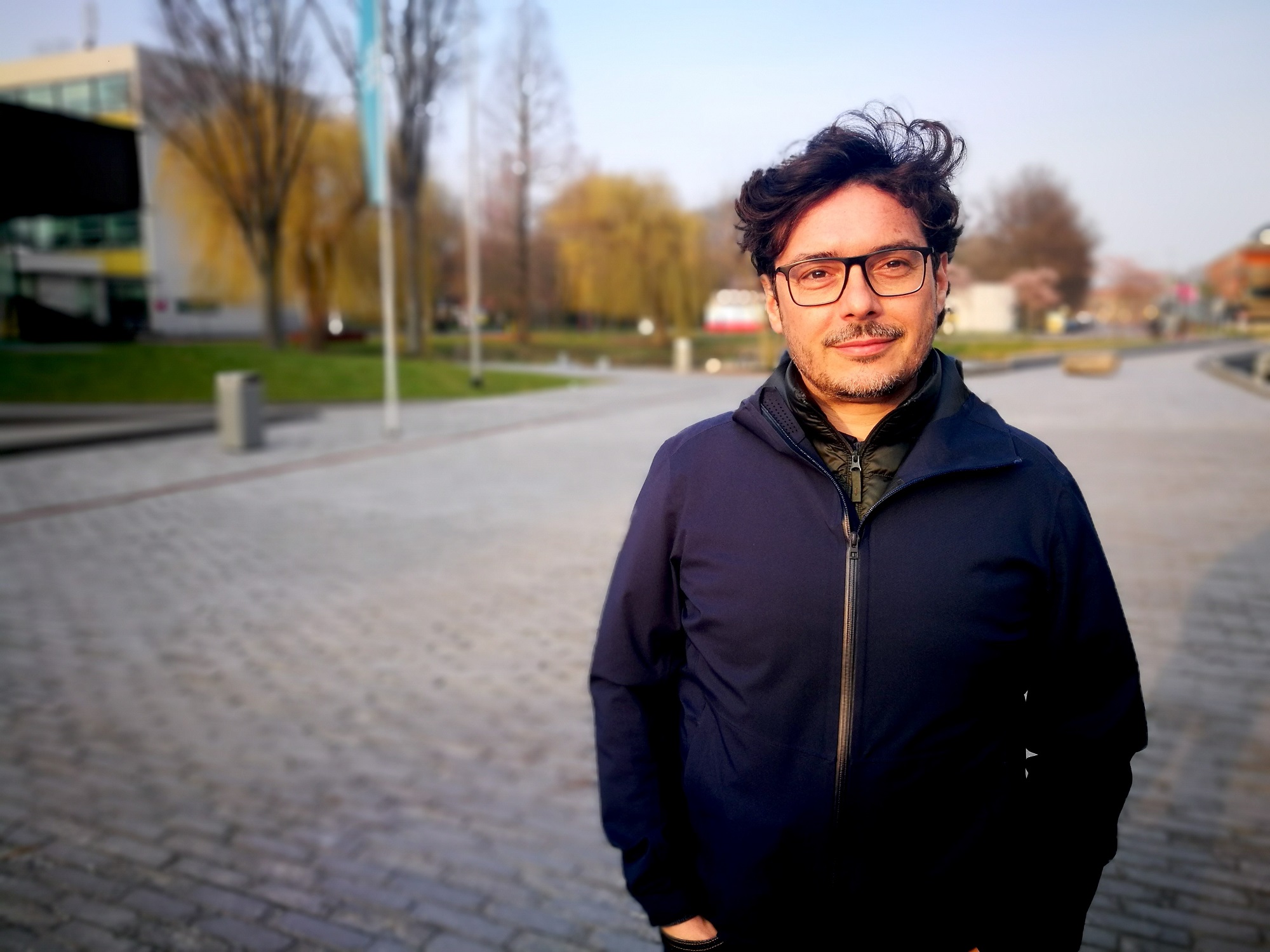With a background in both music and design, researcher Stefano Delle Monache wants to help make sound a more integral part of design studies.
Stefano Delle Monache: “Improving the sonic awareness could lead to very basic remedial actions that can be easily implemented.” (Photo: Heather Montague)
“I just arrived at TU Delft in October, but I can’t say I know the Netherlands yet because of the current situation. I guess I have a very partial view of everything. I won a Marie Curie Fellowship so I will be here for a couple of years doing research on sound-driven design in the Critical Alarms Lab. More specifically, the project is called Participatory Designing with Sound.
Sound is everywhere. We hear it 24 hours a day. We can close our eyes but not our ears. Sound is a sort of seismograph of the presence of products, objects, events, emotions, meaning. Normally it exists as sort of a side effect of events happening in an environment. But now that we live in environments where there are many digital products, these sounds are essentially artificial and can be shaped by design.
My research aims at facilitating users, stakeholders, and people in the creation process and sensitising them with ways to express their ideas in a very aware way. It’s related to the understanding of how people categorise and imagine sounds, in order to turn this knowledge into methods for design.
‘One of my main goals is to introduce sound into design studies’
Currently, I am collaborating with Reinier de Graaf Hospital where we are exploring the relationship between sound and sleep quality. There is lots of research about the effects of music in terms of relaxation, masking and distraction and how they may help to facilitate sleeping. The hospital already has a project about sleep quality, but they want to gain more experience on the role that sound may play in hospitalisation. We’re working with them, we are organising workshops with neurologists, nurses, somnologists, and managers. We will propose tools and methods and give them the basic skills to talk about sound in a grounded way.
First, improving the sonic awareness could lead to very basic remedial actions that can be easily implemented. For example, avoiding speaking in front of a patient’s door or wearing different shoes, little things like that. But it could be that adding sound or music may improve the sleep quality of patients. There are many aspects involved, like music preferences, the individual sonic imagery, as well as the preconceptions of the medical staff, many things that might be entangled so that’s where the research comes into play. We need to first understand and then empower them.
One of my main goals is to introduce sound into design studies. I come from a background of both music and design. Over years of teaching and researching, I have noticed that a knowledge in music composition and sound creation is essential, but clearly not enough to tackle the complexity of the design process. Similarly, design curricula are instead much informed by the visual culture. So, my ambition is to find ways to let these two worlds communicate in a more effective way.
There is a growing interest from students to also learn and master the auditory aspects of their projects and work. And there is a growing interest from the market, as well as a more general consideration of the sonic aspects in our everyday life. This also relates to sound or music pollution. You can’t stop it, but you can design it better. Although silence is of course important, I think a silent world would be completely uninformative and even sad.”
Heather Montague / Freelance writer



Comments are closed.